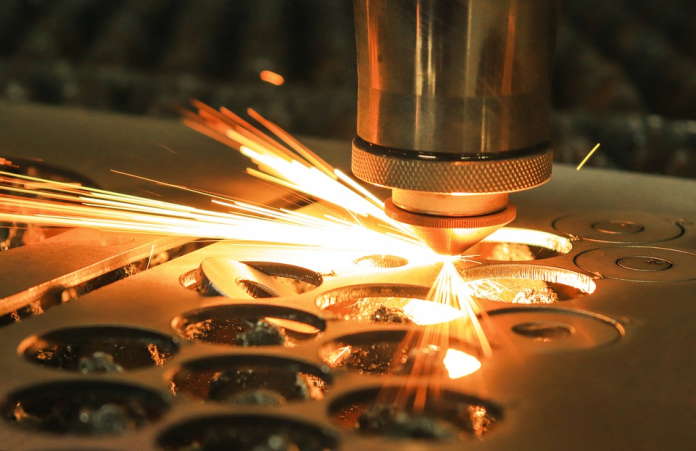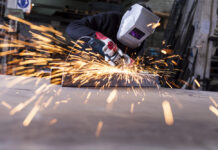From metal brackets to computer chasses, sheet metal fabrication is an essential manufacturing process. With sheet metal prototyping, custom designs can be produced extremely quickly and affordably. Use the following guidelines to begin designing a sheet metal part.
Materials and thicknesses
Many different metals can be used for sheet metal fabrication. Online manufacturing shops offer a range of materials that includes aluminum, stainless steel, mild steel, and copper.
- Aluminum is a lightweight, flexible, and corrosion-resistant material that is popular in the automotive and aerospace industry. Aluminum is extremely malleable and easy to machine.
- Stainless steel is a strong and adaptable material that can be used for nearly any application. Stainless steel does not warp, corrode, or discolor easily.
- Mild steel is a soft and malleable metal that is easy to fabricate and extremely affordable. Mild steel must be galvanized to avoid corrosion.
- Copper is a popular fabrication material that is easy to work with and corrosion-resistant. It’s also highly conductive and can be used for a wide number of applications.
Material thicknesses typically range between 0.025 and 0.130 inches. For easy fabrication, choose the thinnest possible thickness while maintaining strength and durability. Items made with a single sheet of metal will always have a uniform wall thickness, so engineers should account for this in their designs.
Finishing and assembly
Once a part has been fabricated, a manufacturing shop offers several different finishing options. Available surface finishes improve the appearance of a part and often increase its durability or resistance.
- Powder coating changes the color of a part and will give it either a smooth or textured finish.
- Metal plating increases a part’s strength and durability while giving it a unique cosmetic look.
- Silk screening applies design to the part and is often used for logos or warning labels.
A manufacturing shop or manufacturing partner network can also assemble sheet metal parts to create a finished product. The following assembly options are available:
- Riveting attaches two plates with a piece of hardware. Pop rivets are best used for thin plates, while PEM rivets come in a wide range of shapes and functions.
- Welding can be used to seal seams and create durable joints. Stitch, seam, and tack welding are all available.
DFM tips for sheet metal fabrication
Following these guidelines will ensure that finished parts come out according to the original design. Check any design for viability by uploading the CAD files to the online manufacturing platform.
- Lower the part count for simpler manufacturing and lower prices. Two parts can be combined if they don’t need to move relative to each other and will not benefit from being apart.
- Design for ease of assembly by creating parts that fit together intuitively.
- Add collars or bend reliefs and align lugs with the grain structure in order to strengthen the metal and avoid tears.
- Leave a wide distance between holes and punches to prevent the metal from deforming. Spacing between holes and edges should be the same as the sheet thickness, and spacing between holes should be twice the sheet thickness.
Sheet metal shops are offering high-quality sheet metal services with short lead times and affordable prices. After you’ve created your design, upload it to the online platform for a free DFM analysis and to generate an instant quote.
Learn how to select the right manufacturing process for your metal parts. Easily compare injection molding, CNC machining and additive manufacturing (AM) technologies in production cost in an online manufacturing shop.
Find a Home-Based Business to Start-Up >>> Hundreds of Business Listings.

















































